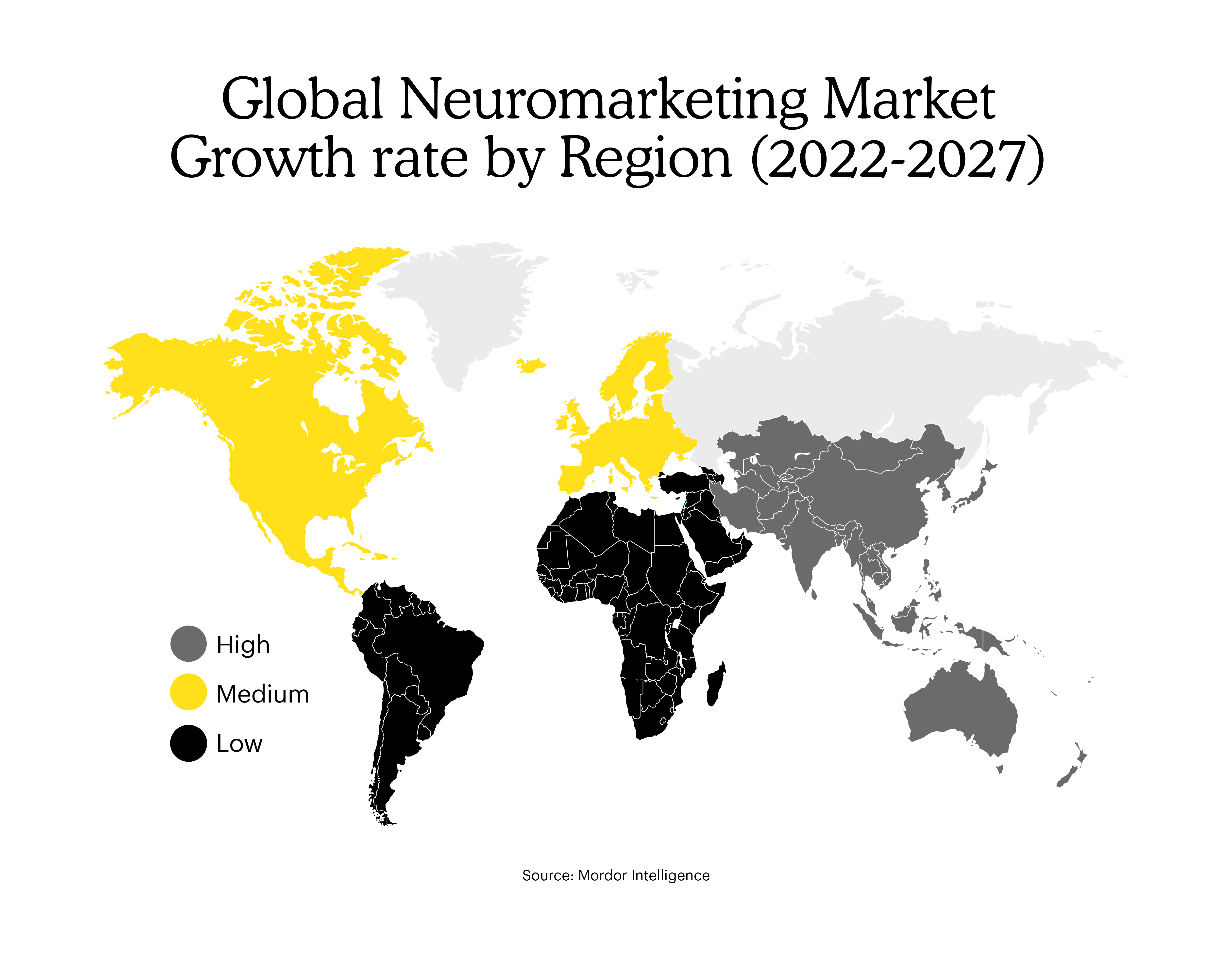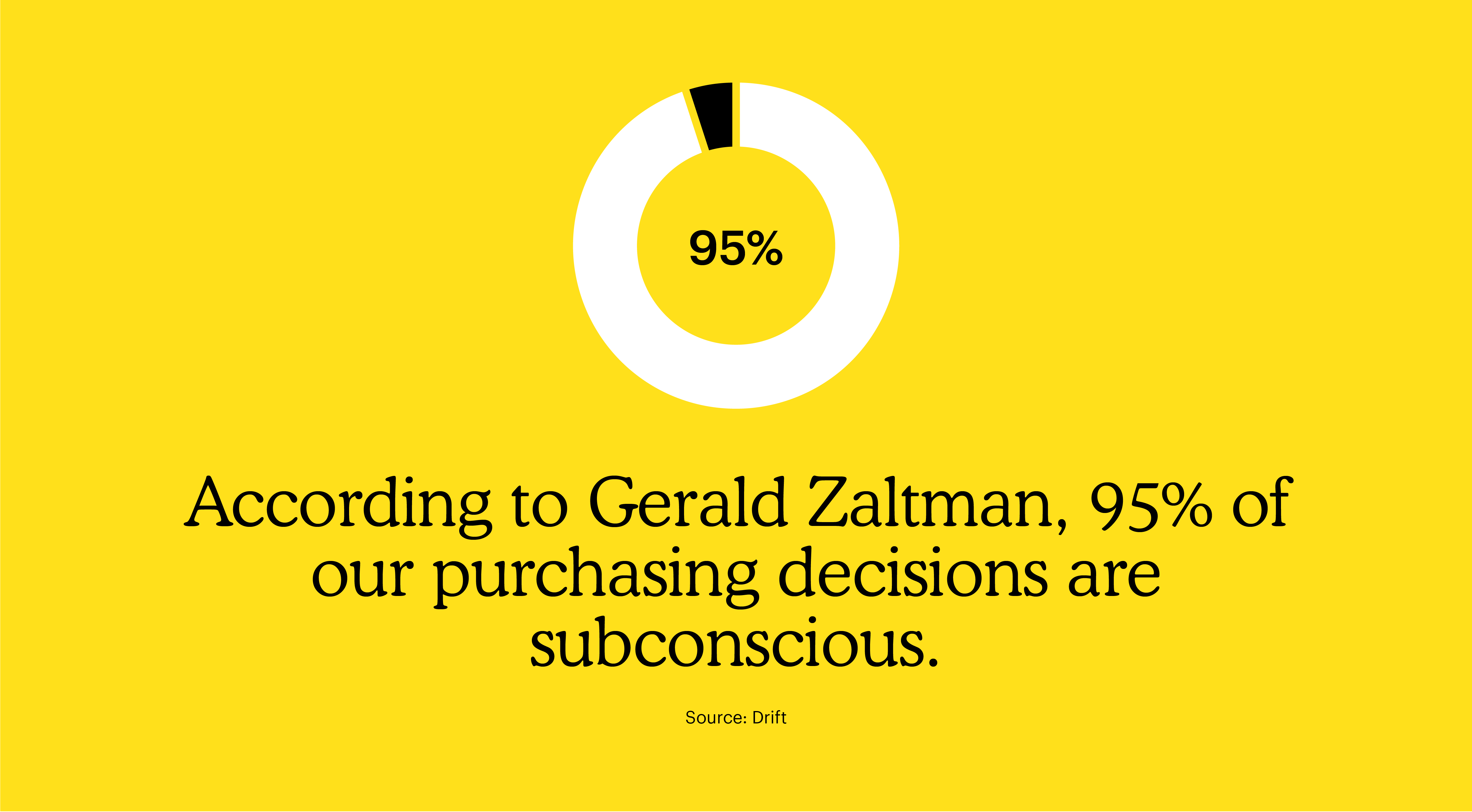What is neuromarketing?
Neuromarketing has a broad definition. One way to sum up what neuromarketing is this:
Neuromarketing is any marketing or market research activity utilizing methods and techniques developed by neuroscience or that is informed by these brain imaging methods and techniques.
Ultimately, neuromarketing seeks to solve the same problems as all the other techniques of marketing research. Neuromarketing aims to inform companies how to use their advertising and marketing budgets to build customer relationships and implement customer care for customer retention strategies while optimizing revenues and profits for their shareholders. Sometimes, neuromarketing produces better answers than other forms of consumer research.

What is consumer neuroscience?
Consumer neuroscience is a more people-focused area of marketing research. Neuromarketing focuses on how to use the findings of neuromarketing research to improve the return on investment from marketing strategies.
Consumer neuroscience is a discipline in marketing psychology that zooms in on consumer behavior and how various aspects of how the human brain works influence personal preferences and buying behavior.
Both neuromarketing and consumer neuroscience inform companies about how to sell, but consumer neuroscience tells companies more about how to turn new customers into regulars.
What are neuromarketing and consumer neuroscience good for?

Neuromarketing and consumer neuroscience inform companies about marketing and consumer behavior in three major ways:
- They can tell us what is going on inside people's brains while they are exposed to a marketing stimulus. That can be any marketing material used in a controlled test.
- They can tell us how our brains react to marketing messages in different contexts. For instance, they can tell us how our brains react when we see a product by itself or placed next to another product. They can tell us the differences in our brains when we see a product in a brick-and-mortar store versus when we see it online.
- They can tell us how our brains translate those experiences into decisions, such as the immediate purchase decision and the evolution of branding and brand loyalty in the brain.
Neuromarketing researchers use their findings to make recommendations to companies in six basic areas.
Advertising
Neuromarketing tells us which ads work better. Surprisingly, one of the findings of consumer neuroscience research is that ads are more effective when we don't pay close attention to them.
Branding and brand loyalty
A strong brand is one that stays "top of mind" when consumers think about a certain product. Neuromarketing explains how strong connections in long-term memory make certain brands hard to resist. Neuromarketing also measures the effects of branding of which consumers are not even aware.
Entertainment
Consumers know when they are being informed and when they are being entertained, but they usually do not understand what it is about an entertainment offering that makes it interesting and fun. Neuromarketing explains the effect entertainment has on the brain.
Online marketing
There is no need for delayed gratification for consumers who shop online. Consumers don't have to wait until they can get down to the store to buy the items they want online. Neuromarketing research explores the dynamics of consumer decision-making and how marketers can get their messages out in time to make a difference.
Product design
Marketers need to make informed guesses about what consumers will want months or even years before they can bring their products to the market. Neuromarketing can give marketers a way to predict when a product will generate massive excitement and when it will be met with a massive "Huh?"
In-store and online shopping are two areas in which neuromarketing has a great deal to offer. Shoppers are exposed to a barrage of information and stimulation as they move through stores, so they spend very little conscious effort in product selection. Situational factors can overrule a shopper's conscious intent.

Salespeople for years have adjusted their sales pitches in response to obvious reactions from their customers. The tone of voice, the pace of speech, hand gestures, and simply walking away are some of the cues salespeople have always used to adjust their approach in response to conscious cues from their customers.
Modern tools of neuromarketing give marketers a way to assess the subconscious effects of their sales effort through technology and give them an understanding of consumer behavior. Let's take a look at just a few of the tools and techniques neuro marketers have available to them.
Facial coding systems
In the 1970s, American psychologist Paul Ekman developed a system for coding facial expressions that are expressed by human beings in every culture.
Matching facial expressions to six basic emotions, happiness, sadness, anger, fear, disgust, and surprise, Ekman created a system for analyzing emotional reactions from freeze-frame photographs taken every few milliseconds as facial muscles move.
Trained coders use his Facial Action Coding System to very accurately assess emotional reactions, although most cannot do it in real-time. There are automated systems that can read facial expressions through webcams.
Eye tracking
Our eyes automatically follow what interests us. Changes in eye movements, including speed of eye movement, frequency of blinking, duration of fixed gaze, and patterns of searching behavior all tell us how a consumer is responding to a marketing stimulus such as an ad or a photo.
A longer fixation indicates difficulty in processing the input from the ad or photo. A shorter fixation indicates understanding. Saccades, the movement of the eye between fixations, reveals whether the subject is ready to move on for new information or is still processing the initial stimulus.
Blinking occurs faster when people are disengaged from a stimulus and slower when they are focused on it. Groups of people who blink at the same time are all being stimulated by the same message at the same time. Rapid blinking indicates a startle response.
Pupillometry, the measure of how dilated the pupils are, gives a measure of the emotional impact of an ad, a message, or a photo. The wider the pupils are dilated, the greater the emotional impact of the message. Pupillometry does not reveal whether the emotional impact is good or bad.
All of these measurements can be taken automatically.
Listening to blood flow in the brain
Functional magnetic resonance imaging or fMRI measures the blood oxygenation level-dependent (BOLD) signal in the brain. When a particular part of the brain is more active, it uses more oxygen. fMRI estimates the impact of a marketing stimulus by looking at the change, or lack of change, of BOLD signals in the brain.
There is a serious limitation on the use of Functional magnetic resonance imaging for measuring brain activity. It takes about 8 seconds to capture an image. In that time, the subject could be moving on to another stimulus. However, neuromarketing researchers have another, a more responsive tool for measuring brain activity.
EEG
Electroencephalography, better known as EEG, plugs into electrical brain activity. It measures changes in the brain much faster than imaging methods like functional magnetic resonance imaging and PET (positron emission tomography, also used to make images of brain activity.
It is mathematically impossible to locate the source of an electrical impulse inside the brain. However, EEG can tell you when something is happening in the brain almost in real time.
Knowing that something is happening in the brain does not necessarily tell you why you should care. But putting all of the tools of neuromarketing together offer numerous new insights on brain responses to marketing efforts.
What you can learn from neuromarketing
Chances that your startup marketing strategy doesn't involve EEG, eye tracking, or biometrics. But chances are that it does involve email.
Here are two examples of how startups have found success with their email campaigns by using principles learned by the science of neuromarketing.
- The Hollywood Agency boosted its sales by implementing a single, simple principle: Show trust to gain trust. Incorporating this idea into their sales copy boosted new client inquiries by over 200 percent.
- Shutterway recognized a need for rebranding when they were coming out of lockdown. They focused on concepts from neuromarketing that could change the look of their e-stationery. such as boosting memory recall with complex fonts, encouraging action with simple fonts, and incorporating sound and color to sell more.
What products use neuromarketing?
Fritos, Cheetos, Hyundais, Paypal, and Yahoo have often been cited as case studies in neuromarketing. But the simple fact is, any marketing effort can benefit from the insights offered by neuromarketing.
Incorporate consumer neuroscience into your emails
So, how can you use the findings of neuroscience in your next email campaign?
- Insert a gif, an emoji, or your logo as the first element in your email. Our brains process images before they process words.'
- Make sure the subject line of your email has emotional content. Emotional reactions, either positive or negative, encourage recipients to read on.
- Evoke sensations with your images, the taste of gourmet food, the feel of a hand-knitted sweater, or the sound of a gentle tide. Consumers "feel" their purchases before they make buying decisions.
- Offer social validation. Emphasize how many people are satisfied with your product.
- Convey a sense of urgency in your appeal. Give your reader a call to action now.
Use the tools of neuromarketing with Mailchimp. At every step of your inbound marketing strategy, Mailchimp has tools that help.


